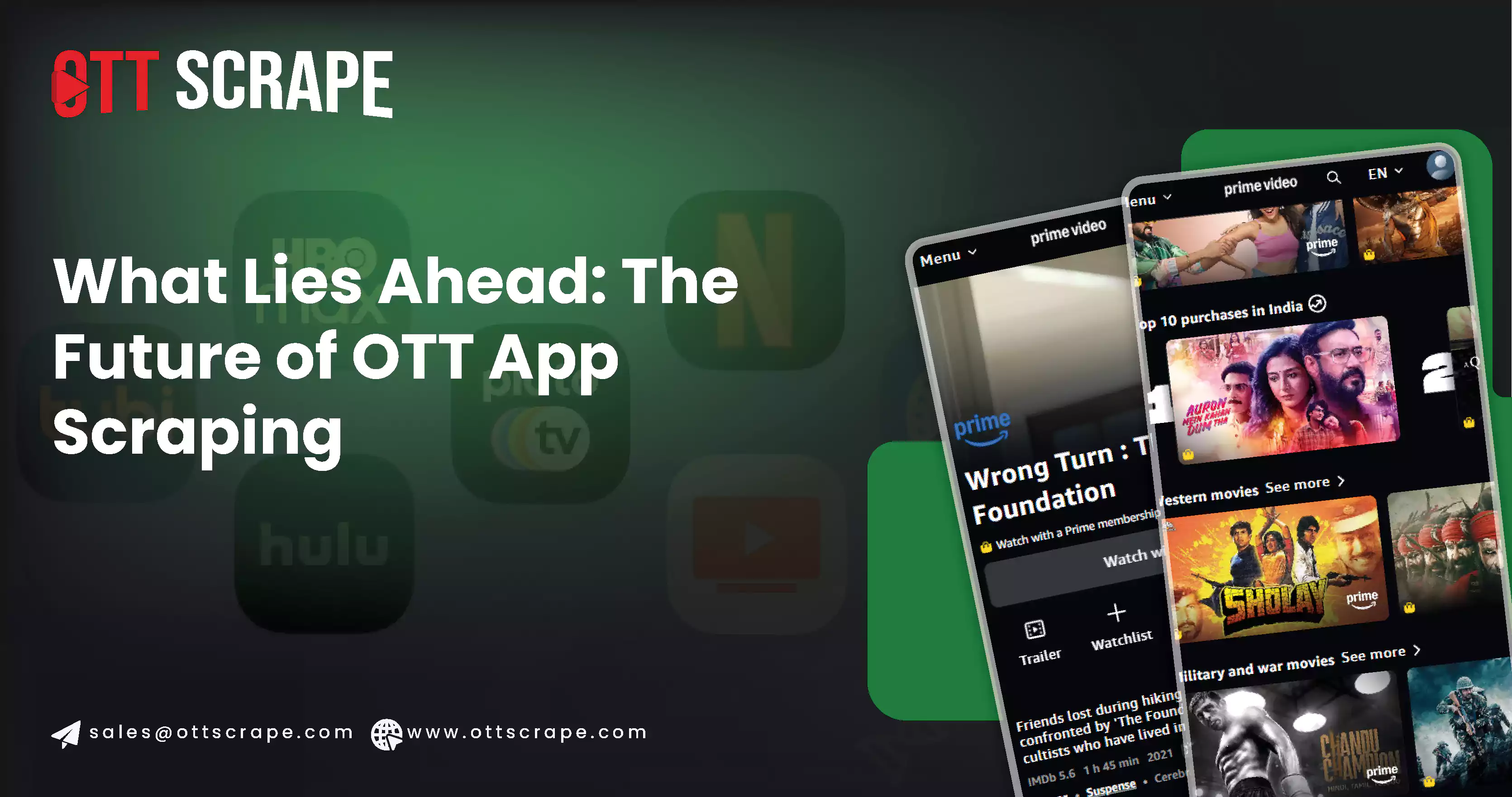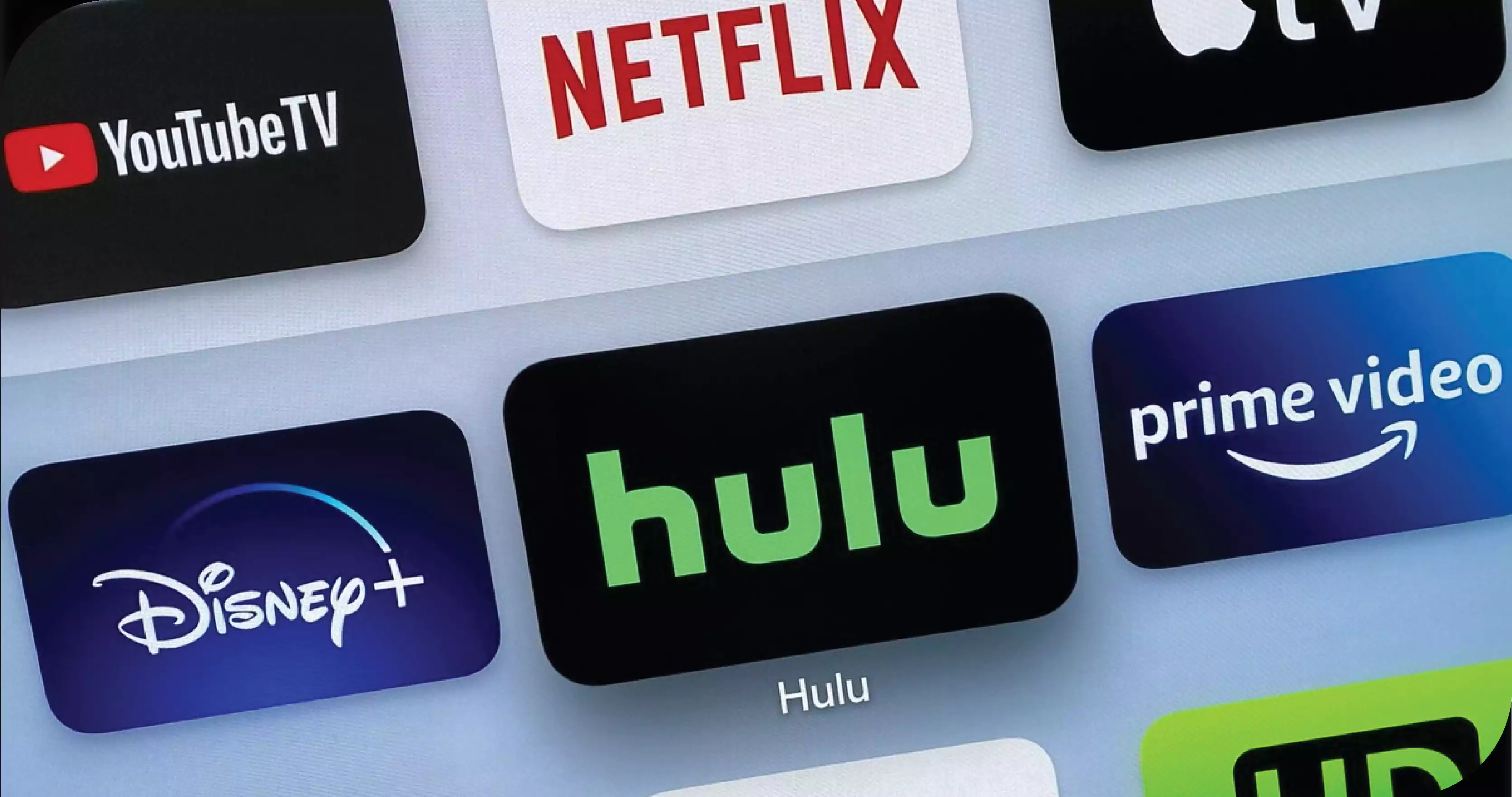
The Over-The-Top (OTT) media industry has seen exponential growth in recent years, driven by the increasing demand for digital content and the rise of streaming platforms. As we look ahead to 2025 and beyond, OTT app scraping is poised to become an even more critical tool for businesses, analysts, and researchers seeking to understand and capitalize on this dynamic sector. This article explores the future of scraping OTT app data, focusing on emerging trends, technological advancements, and the implications for stakeholders in the industry.
Overview OTT App Scraping

OTT app scraping refers to extracting data from OTT platforms such as Netflix, Amazon Prime ,Video Disney+, and Hulu. This data can include a wide range of information, such as content metadata (titles, genres, release dates), user reviews, ratings, and viewing statistics. Streaming data is extracted to gather valuable insights that inform business strategies, content acquisition, and market analysis.
The need for robust scraping tools and techniques will grow as OTT platforms evolve. Several key factors, including technological advancements, regulatory changes, and shifts in consumer behavior, will shape the future of extracting OTT app data.
Emerging Trends in OTT App Scraping
Advanced-Data Extraction Techniques
The future of OTT app scraping services will see the implementation of more advanced data extraction techniques. Traditional scraping methods, which rely on static web pages and HTML structures, will evolve to accommodate the increasing complexity of modern OTT platforms. Dynamic content, JavaScript rendering, and APIs will necessitate more sophisticated scraping solutions.
Headless browsers and browser automation tools like Puppeteer and Selenium will become more prevalent. These tools allow interaction with dynamic content and facilitate data extraction from platforms that rely on complex JavaScript. APIs will also play a crucial role. Many OTT platforms provide APIs for accessing content and user data, which can be leveraged to streamline the scraping process. However, as platforms become more stringent about API access, finding and utilizing these endpoints will require advanced skills and strategies.
Increased Focus on Personalization and Recommendations
Personalization has become a hallmark of the OTT experience, with platforms using sophisticated algorithms to tailor content recommendations to individual users. As OTT platforms invest heavily in personalization, OTT data scraper must adapt to capture data on how these algorithms function and influence user behavior. Machine learning and artificial intelligence(AI) will be employed to analyze scraping data and derive insights about recommendation systems. By understanding how personalization affects content consumption, businesses can better predict viewer preferences and optimize content strategies.
Integration of Multi-Source Data
OTT platforms are not the only sources of valuable data. Social media, forums, and review sites provide additional insights into viewer preferences and industry trends. Future OTT app data scraping will increasingly involve integrating data from multiple sources to create a comprehensive market view. Sentiment analysis and social listening tools will gauge audience reactions to content and identify emerging trends. By combining data from OTT platforms with social media insights, businesses can gain a more holistic understanding of viewer preferences and behavior.
Enhanced Data Privacy and Security Measures
As data privacy concerns continue to rise, OTT platforms will likely implement stricter security measures to protect user information. This will impact how data is scraped and used, necessitating advancements in data anonymization and compliance practices. Scraping tools must incorporate features that ensure data is collected and processed by privacy regulations such as the General Data Protection Regulation (GDPR) and the California Consumer Privacy Act (CCPA). Ensuring ethical and legal compliance will be critical for maintaining trust and avoiding potential legal issues.
Real-Time Data Processing and Analytics
The demand for real-time insights is growing, driven by the need to make swift decisions in a rapidly changing market. Future OTT app scraping will focus on real-time data processing and analytics to provide up-to-the-minute insights into content performance, user engagement, and market trends. Stream processing frameworks such as Apache Kafka and Apache Flink will become essential for handling and analyzing large volumes of data in real time. These technologies will enable businesses to adapt their strategies quickly based on the latest information.
Technological Advancements Shaping the Future

1. Artificial Intelligence and Machine Learning
AI and machine learning will play a pivotal role in the evolution of OTT app scraping. These technologies will enhance the ability to analyze and interpret complex data sets, uncovering patterns and trends that may not be immediately apparent.
Natural Language Processing (NLP) will analyze text data from user reviews and social media, providing deeper insights into audience sentiment and content reception. Image recognition and video analysis technologies will also extract data from visual content, adding another layer of depth to scraping efforts.
2. Blockchain Technology
Blockchain technology has the potential to revolutionize streaming data scraping by providing a secure and transparent way to track data usage and ownership. In the context of OTT app scraping, blockchain could be used to ensure data integrity and prevent unauthorized access. Smart contracts and decentralized applications (dApps) could facilitate more secure and efficient data transactions, while blockchain’s immutable ledger would enhance transparency and accountability.
3. Cloud Computing and Big Data
Cloud computing will continue to play a significant role in managing and processing the large volumes of data generated by OTT platforms. Cloud-based scraping tools and big data solutions will enable businesses to scale their data collection efforts and handle complex data processing tasks more efficiently.
Data lakes and warehouses will store and manage vast amounts of scraped data, while cloud-based analytics platforms will provide the computational power needed to derive actionable insights.
4. Enhanced User Interface and Experience
Future OTT scraping tools will feature more advanced and user-friendly interfaces, allowing users to easily configure scraping tasks, visualize data, and generate reports. Drag-and-drop interfaces, visual data exploration tools, and customizable dashboards will make it easier for users to interact with and analyze their data.
Automated reporting and alerting systems will also be integrated, providing users with real-time updates and notifications based on predefined criteria or data anomalies.
Implications for Stakeholders

1. Content Providers and Distributors
For content providers and distributors, OTT app scraping will offer valuable insights into market trends and viewer preferences. They can make informed decisions about content acquisition, distribution, and marketing by analyzing data on content performance, pricing strategies, and competitor offerings.
Content optimization and pricing strategies can be tailored based on data-driven insights, leading to more effective content strategies and improved ROI.
2. Marketers and Advertisers
Marketers and advertisers will benefit from scraping data that reveals how viewers interact with content and respond to advertisements. Understanding audience preferences and behavior can create more targeted and effective advertising campaigns.
Ad placement strategies and content promotion efforts can be optimized based on data-driven insights, leading to better engagement and higher conversion rates.
3. Researchers and Analysts
Researchers and analysts will use scraped data to study industry trends, consumer behavior, and the impact of emerging technologies. The ability to access and analyze large volumes of data will enable more comprehensive and accurate research.
The availability of detailed and up-to-date data will enhance market research and competitive analysis, leading to more informed conclusions and recommendations.
4. Regulators and Policymakers
Regulators and policymakers must stay informed about the implications of OTT app scraping for data privacy and security. As data scraping becomes more prevalent, ensuring compliance with privacy regulations and addressing potential ethical concerns will be essential.
Regulatory frameworks and guidelines must be updated to reflect the evolving landscape of data scraping, protect user privacy, and support innovation.
Conclusion
The future of OTT app scraping holds immense potential for transforming how businesses, researchers, and analysts interact with and leverage data from streaming platforms. As we move towards 2025 and beyond, technological advancements, changes in consumer behavior, and evolving regulatory landscapes will shape how data is collected, analyzed, and utilized. By staying ahead of these trends and embracing new technologies, stakeholders can harness the power of OTT app scraping to gain valuable insights, drive strategic decisions, and maintain a competitive edge in the ever-evolving world of digital media. The journey towards a more data-driven and informed future is just beginning, and the opportunities are as vast as the data itself.
Embrace the potential of OTT Scrape to unlock these insights and stay ahead in the competitive world of streaming!
